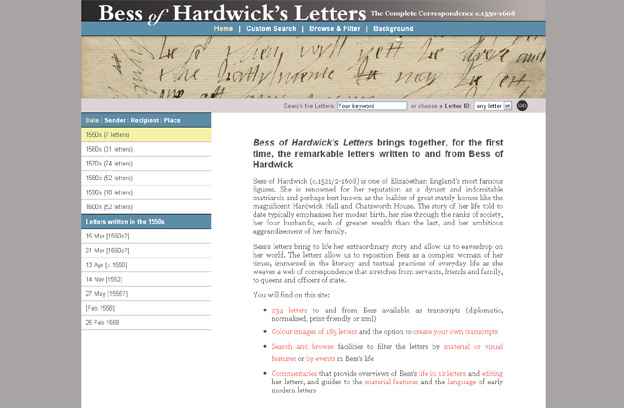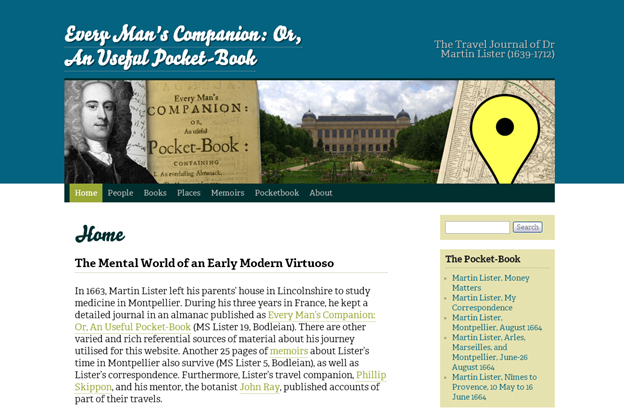Bess of Hardwick’s Letters: The Complete Correspondence c.1550-1608 has recently gone online. Created by the AHRC Letters of Bess of Hardwick Project, led by Dr Alison Wiggins (University of Glasgow), this wonderful new digital edition makes freely available full texts of all 234 letters to and from Bess – one of Elizabethan England’s most famous figures – alongside colour images of 185 missives (with transcription facilities), contextualised by extensive commentaries on Bess and on the material and linguistic characteristics of early modern English correspondence that are alone worth the price of admission. Alison discusses the creation of this extraordinary resource in this super talk from our 2012 seminar series. Congratulations, Alison and team!
Category Archives: Publications

Ghosts in the Machine: (Re)Constructing the Bodleian’s Index of Literary Correspondence, 1927–1963
With the first phase of our Project at an end and our second phase now well underway, it seems an appropriate moment to look back at our work thus far on EMLO and to return to the dataset that lies at its core: the ‘Index of Literary Correspondence’ in the Bodleian Library, a card catalogue which occupies an imposing set of wooden filing drawers at the ‘Selden End’ of the Duke Humfrey’s Reading Room.
CofK Spin-Off Site: The Travel Journal of Martin Lister
Our former Martin Lister Research Fellow Anna Marie Roos has recently launched a small but perfectly formed spin-off site Every Man’s Companion, or An Useful Pocket-Book: The Travel Journal of Dr Martin Lister (1639-1712). Funded by a British Academy small grant, the site brings to life the notes kept in an almanac by Lister during a medical peregrination to Montpellier in 1663, and includes the text of the journal (rendered as a blog); supporting material from Lister’s memoirs and correspondence; a cross-referenced index of people, places, and books; and some sumptuous photographs taken by Anna Marie when she retraced Lister’s steps in the summer of 2011. Anna Marie discusses the project in this paper delivered at our 2011 conference Intellectual Geography: Comparative Studies, 1500-1750.


